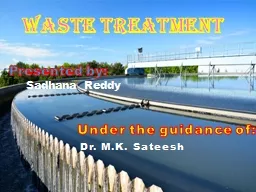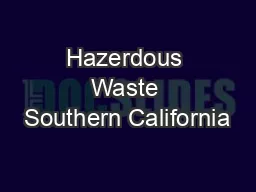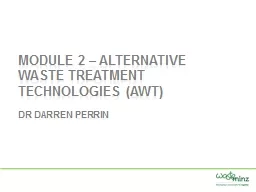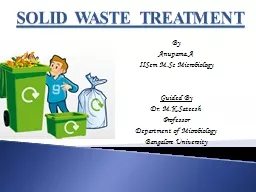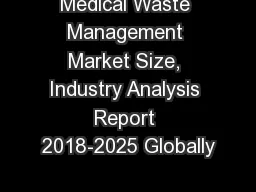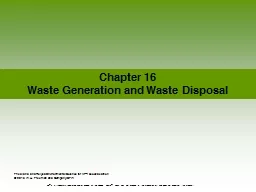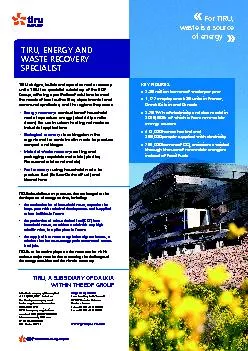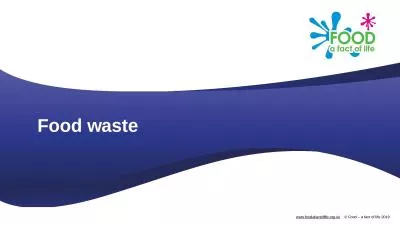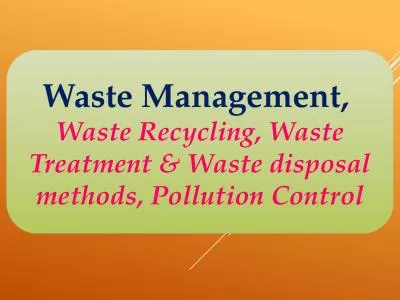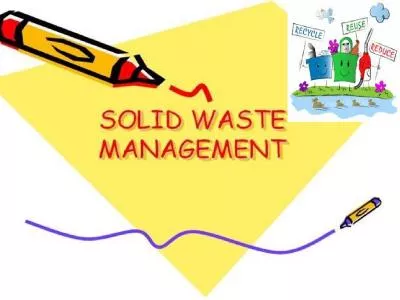PPT-WASTE TREATMENT Under the
Author : trish-goza | Published Date : 2018-12-24
guidance of Dr MK Sateesh Presented by Sadhana Reddy CONTENT I NTRODUCTION S OURCES FOR WASTE WATER TERMS C OMPOSITION OF DOMESTIC WASTE WATER O VER VIEW OF
Presentation Embed Code
Download Presentation
Download Presentation The PPT/PDF document "WASTE TREATMENT Under the" is the property of its rightful owner. Permission is granted to download and print the materials on this website for personal, non-commercial use only, and to display it on your personal computer provided you do not modify the materials and that you retain all copyright notices contained in the materials. By downloading content from our website, you accept the terms of this agreement.
WASTE TREATMENT Under the: Transcript
guidance of Dr MK Sateesh Presented by Sadhana Reddy CONTENT I NTRODUCTION S OURCES FOR WASTE WATER TERMS C OMPOSITION OF DOMESTIC WASTE WATER O VER VIEW OF WASTE WATER TREATMENT. Higgins Environmental strives to reuse and recycle through a vast network of experts and facilities. When disposal or incineration are necessary, advanced waste profiling, lab-packing and manifest preparation assure state and federal regulations are met. Higgins Environmental strives to reuse and recycle through a vast network of experts and facilities. When disposal or incineration are necessary, advanced waste profiling, lab-packing and manifest preparation assure state and federal regulations are met. ). Dr . Darren Perrin. The aim / learning outcome of this module is to provide an overview on the range of technologies that are available for the treatment of mixed waste streams and a brief understanding of the factors which influence the deliverability and operation of different alternative waste treatment technologies (AWTs).. Anupama.A. IISem. . M.Sc. Microbiology. Guided By. Dr. . M.K.Sateesh. Professor. Department of Microbiology. Bangalore University. Waste is . heterogenous. mass generated . . by human and animal activities.. Medical Waste Management Market report provides the future growth trend of the market based on in-depth research by industry experts.The global and regional market share along with market drivers and restraints are covered in the report. View More @ https://www.valuemarketresearch.com/report/medical-waste-management-market Friedland. and . Relyea. Environmental Science for AP. ®. , second edition . © 2015 . W.H. Freeman and Company/BFW . AP. ® . is a trademark registered and/or owned by the College . Board. ®. , . “Zero . Waste is a goal that is ethical, economical, efficient and visionary, to guide people in changing their lifestyles and practices to emulate sustainable natural cycles, where all discarded materials are designed to become resources for others to . units in France, TWh of electricity and steam sold in It is thought that approximately 50% of the food wasted . is . still edible. . The cost of food waste is significant – estimates show that it costs an average family £700 per year.. Source: . Love Food Hate Waste. , . Waste Treatment . & . Waste disposal methods, Pollution Control. www.entrepreneurindia.co. . Introduction. Waste management is the collection, transport, processing or disposal, managing and monitoring of waste materials. The term usually relates to materials produced by human activity, and the process is generally undertaken to reduce their effect on health, the environment or aesthetics. Waste management is a distinct practice from resource recovery which focuses on delaying the rate of consumption of natural resources. . It is defined as. Waste (also known as rubbish, trash, refuse, garbage, junk) is any unwanted or useless materials.. OR. Any materials unused and rejected as worthless or unwanted and “A useless or profile less activity using or expanding or consuming thoughtlessly or carefully.”. Dr. Sonalika’s Eye Clinic provide the best Paediatric ophthalmology treatment, Paediatric eye checkup treatment in Pune, Hadapsar, Amanora, Magarpatta, Mundhwa, Kharadi Rd, Viman Nagar, Wagholi, and Wadgaon Sheri Dr. Sonalika’s Eye Clinic provide the best Cataract Phaco Surgery, Cataract surgery treatment in Pune, Hadapsar, Amanora, Magarpatta, Mundhwa, Kharadi Rd, Viman Nagar, Wagholi, and Wadgaon Sheri Dr. Sonalika’s Eye Clinic provide the best Conjunctivitis (Pink Eye) treatment in Pune, Hadapsar, Amanora, Magarpatta, Mundhwa, Kharadi Rd, Viman Nagar, Wagholi, and Wadgaon Sheri
Download Document
Here is the link to download the presentation.
"WASTE TREATMENT Under the"The content belongs to its owner. You may download and print it for personal use, without modification, and keep all copyright notices. By downloading, you agree to these terms.
Related Documents

